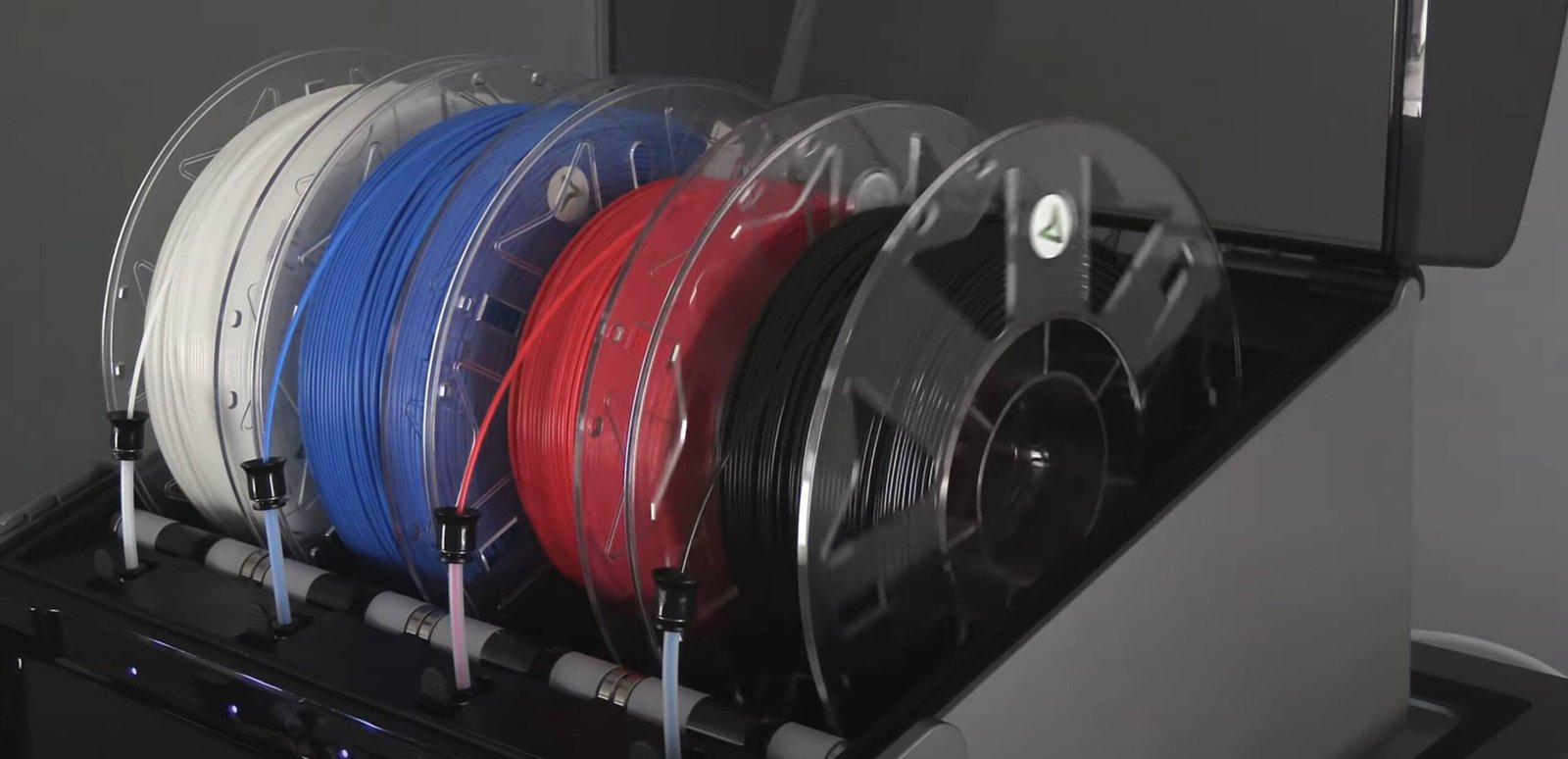Maintaining your Creality Filament System (CFS) is essential for reliable 3D printing. From replacing worn PTFE tubes to checking filament storage desiccant, proactive care prevents filament clogs, feeding failures, and ensures high-quality prints. Whether you’re a hobbyist or professional, this complete guide will show you how to maintain your CFS for optimal performance.
Table of Contents
1. PTFE Tube: Preventing Filament Clogs and Feeding Issues
The PTFE tube is a critical component in your 3D printer’s filament feeding system, guiding filament smoothly to the extruder. However, due to constant friction, it’s prone to wear over time—especially when printing with abrasive filaments like carbon fiber.
Key Maintenance Tips for PTFE Tubes
- Inspection Frequency: Check the PTFE tube during every maintenance cycle for signs of scratches, narrowing, or warping.
- Replacement Schedule:
- For standard materials, replace the PTFE tube every two months.
- For abrasive materials like fiber-reinforced filaments, inspect monthly and replace promptly if worn.
- Specifications: Use a PTFE tube with dimensions 4mm (outer diameter) x 2.5mm (inner diameter), which is standard for most CFS systems.
Pro Tip: If filament feeding feels inconsistent, manually feed the filament through the tube to detect resistance or blockages.
📘 Further Reading: How to Replace the PTFE Tube in Your CFS System
2. Filament Spool Shaft Drive Kit: Resolving Feeding Failures

Feeding failures in a CFS system are often caused by issues with the filament spool shaft drive kit. Damaged or loose components can disrupt gear alignment, resulting in uneven feeding or filament skipping.
Common Signs of Spool Shaft Drive Kit Problems
- Visible wear on the spool shaft or adjacent parts.
- Loose installation causing improper gear meshing with the filament inlet assembly.
How to Fix It
- Inspect the spool shaft drive kit regularly for damage or alignment issues.
- If damaged, replace it promptly to restore feeding consistency.
- Ensure all gears are securely meshed and properly lubricated.
Pro Tip: Tighten any loose parts during installation to prevent future feeding failures.
📘 Watch the Video Tutorial: How to Replace the CFS Filament Spool Shaft Drive Kit
3. CFS Desiccant: Protecting Your Filament from Moisture
Filament quality heavily depends on proper storage, and the desiccant in your CFS system plays a vital role in controlling humidity. Neglecting desiccant maintenance can lead to moisture absorption, affecting filament integrity and causing damage to internal components.
Best Practices for Maintaining CFS Desiccants
- Inspection Schedule: Check desiccants every two weeks for clumping, discoloration, or dampness. Replace if ineffective.
- Replacement Timeline: Change the desiccant every three months, even if it appears functional, to avoid water leakage.
- Placement: The CFS has two desiccant storage locations, so make sure to check both during routine maintenance.

Pro Tip: Use high-quality desiccants for better moisture control and longer storage life.
📘 Guide: Replacing Desiccant in a CFS System
4. Why Regular CFS Maintenance Matters
Neglecting routine maintenance can lead to:
- Filament Clogs: Caused by worn PTFE tubes.
- Feeding Failures: Resulting from misaligned spool shaft gears.
- Moisture Damage: Due to ineffective desiccants.
By following these periodic maintenance tips, you can ensure smooth printing, protect your system’s longevity, and reduce the chances of costly repairs.



![CFS Maintenance 101: Simple Tips to Extend Your 3D Printer’s Lifespan 3 Dry & Dry [2 LBS] Blue Indicating Silica Gel Beads Desiccants (Industry Standard 3-5 mm) - Reusable Desiccant Beads Silica Beads(Blue to Pink)](https://m.media-amazon.com/images/I/41jP3CrV90L.jpg)



Leave a Reply